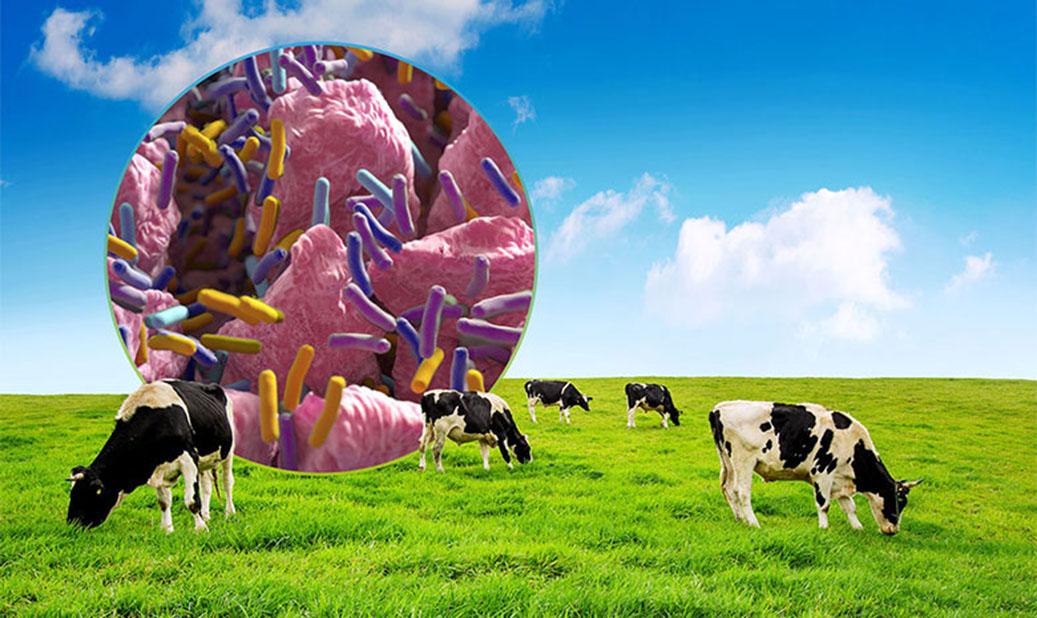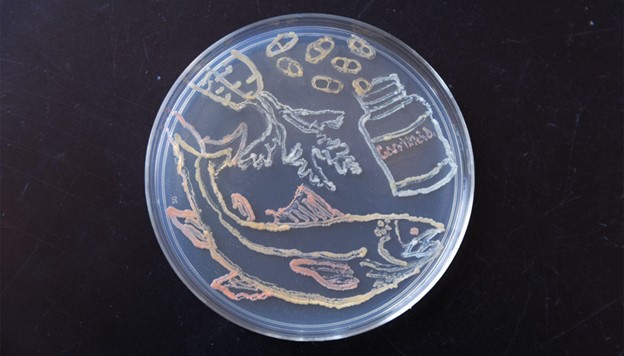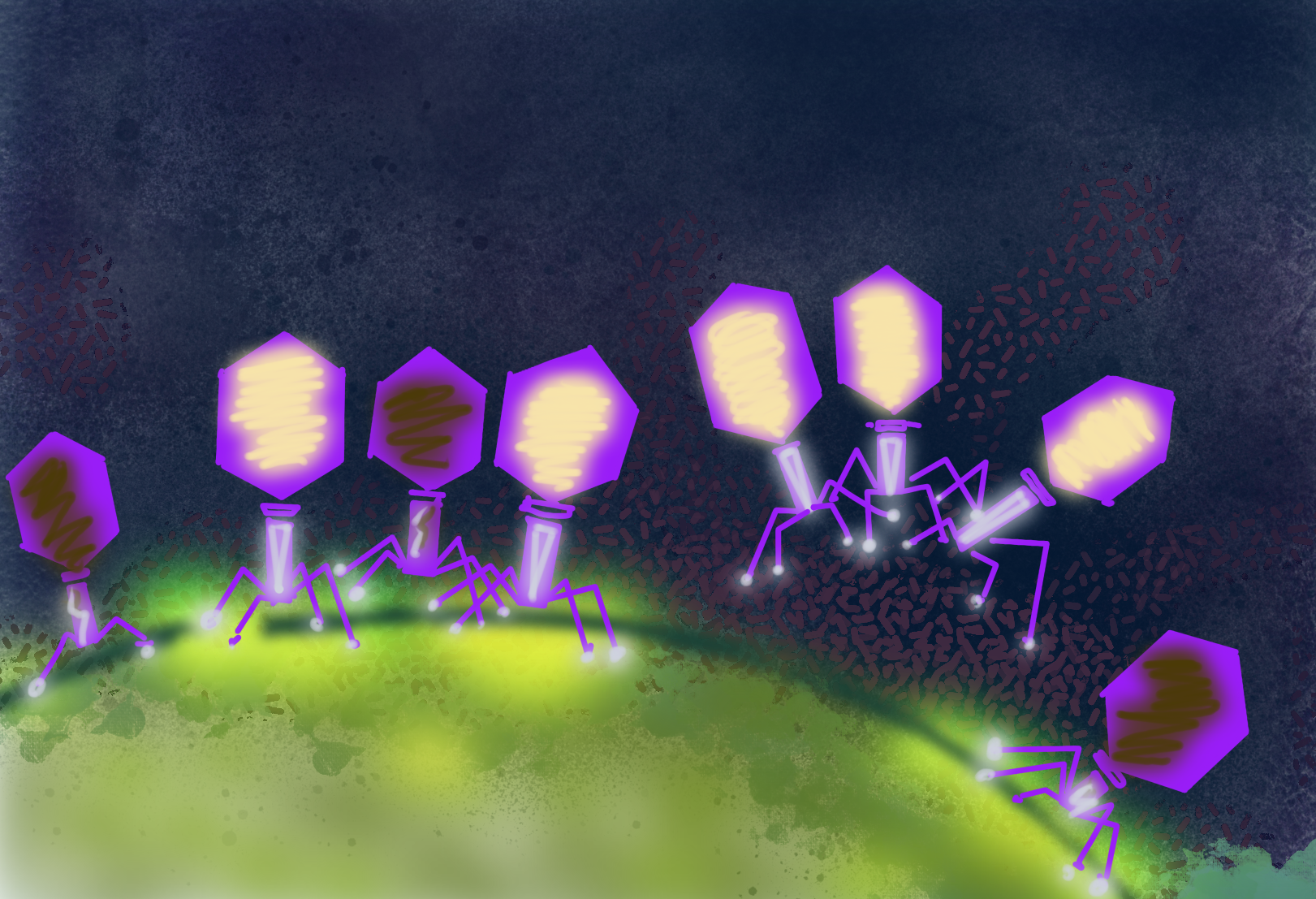Newly Discovered Bacteria Breaks Down Biomass
The bacteria from cows and other ruminants’ digestive systems could provide insights for converting corn stover and other biomass into fuels.

The Science
Despite decades of research, how cows and other ruminants deconstruct grasses and other plant biomass in their stomachs is still something of a mystery. Now, an international team of scientists has identified a family of bacteria and enzymes that break down plant biomass. These bacteria appear to be critical for ruminants to obtain their nutritional needs from plants. Breaking down corn stalks and other plant matter into vital chemicals is a big hurdle for commercial biofuel production.
The Impact
Why study the digestive systems of ruminants like cows, sheep, and even reindeer? These systems may help scientists uncover more efficient and environmentally friendly ways to turn agricultural waste into biofuels. Also, it may improve our understanding of ruminant nutrition. The previously unknown family of bacteria discovered in this study appears to actively degrade plant biomass in the stomachs of ruminants. The bacteria use enzymes that are different from those already well known to scientists.
Summary
Using detailed information about the molecular biology of switchgrass and corn stover—both widely used to create biofuels—scientists identified a previously unknown family of bacteria found in both cows and sheep. The team described a family representative found in the rumen of two cows. Data gathered using an Orbitrap mass spectrometer at EMSL, the Environmental Molecular Sciences Laboratory, helped scientists realize the population of bacteria was metabolically active in the rumen. In both the feedstock and the cows, the bacteria secreted multi-modular enzymes believed to be very powerful in biomass conversion. The metabolism and abundance of these bacteria indicate they may play an important role in allowing ruminants, and commercial processes, to deconstruct biomass. Team members included researchers from the Norwegian University of Life Sciences; the Ohio State University; EMSL, a DOE Office of Science user facility; Germany’s Helmholtz Centre for Infection Research; the University of Illinois, Urbana-Champaign; University of Michigan Medical School; and University of California, Davis.
Contact
Program Manager
Paul Bayer
Department of Energy, Office of Science, Biological and Environmental Research, SC-23.1
(301) 903-5324
Principal Investigator
Phillip Pope
Norwegian University of Life Sciences
phil.pope@nmbu.no
Funding
This work was supported by the Department of Energy’s (DOE’s) Office of Science, Office of Biological and Environmental Research. The research was done using resources at the Environmental Molecular Sciences Laboratory and the Advanced Photon Source, both DOE Office of Science user facilities, as well as the European Research Council.
Publications
A.E. Naas, L.M. Solden, A.D. Norbeck, H. Brewer, L.H. Hagen, I.M. Heggenes, A.C. McHardy, R.I. Mackie, L. Paša-Tolić, M.Ø. Arntzen, V.G.H. Eijsink, N.M. Koropatkin, M. Hess, K.C. Wrighton, and P.B. Pope, “‘Candidatus Paraporphyromonas polyenzymogenes’ encodes multi-modular cellulases linked to the Type IX secretion system.” Microbiome 6, 44 (2018). [DOI: 10.1186/s40168-018-0421-8]
Related Links
Environmental Molecular Sciences Laboratory science highlight: Newly discovered bacteria can break down biomass
EMSL website: Orbitrap mass spectrometer
Highlight Categories
Performer: University , DOE Laboratory , SC User Facilities , BES User Facilities , APS , BER User Facilities , EMSL
Additional: Collaborations , International Collaboration



